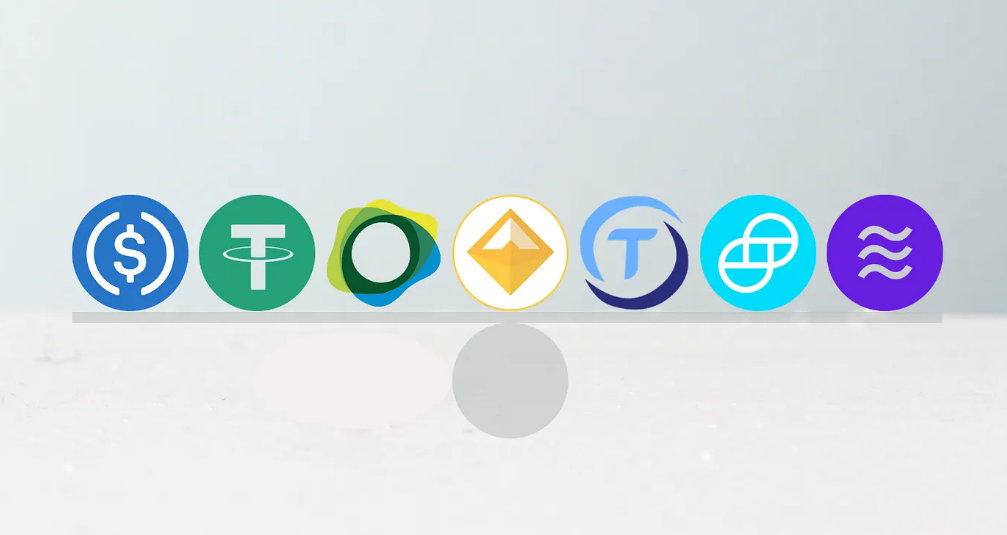1、BTCFi Ecosystem Overview
1) Definition and Core Concepts of BTCFi
BTCFi (Bitcoin Finance) is a financial services platform and protocol built around the Bitcoin (BTC) ecosystem, integrating decentralized finance (DeFi) technology. Its core mission is to provide Bitcoin holders with more diverse financial applications, such as lending, collateralization, and stablecoin issuance, through decentralized protocols, thereby expanding the financial functionality of Bitcoin.
2) Key Features of the BTCFi Ecosystem:
- Decentralization and Autonomy: BTCFi operates through decentralized protocols and smart contracts, eliminating the dependence on traditional financial intermediaries and enabling autonomous financial operations.
- Financialization of Bitcoin: BTCFi transforms Bitcoin from a simple store of value asset into a multi-functional financial asset that can be used for lending, collateralization, and stablecoin issuance, expanding its financial application scenarios.
- Diversified Financial Services: BTCFi is not only a tool for storing Bitcoin's value, but also integrates various DeFi application scenarios, including lending, collateralization, and stablecoins, providing Bitcoin holders with a variety of income sources.

3) Development Background of BTCFi
Since its inception, Bitcoin has been viewed as "digital gold," primarily used for value storage and cross-border payments. However, due to the lack of native smart contract functionality in Bitcoin, traditional DeFi protocols (such as those based on Ethereum) have been unable to widely support the use of Bitcoin. Therefore, how to integrate Bitcoin into the DeFi ecosystem has long been a major challenge for the Bitcoin community and the cryptocurrency industry.
With the development of cross-chain technology and Layer-2 solutions, the DeFi ecosystem for Bitcoin has gradually taken shape. Particularly with the rise of cross-chain protocols, Bitcoin can now interoperate with other blockchains (such as Ethereum and Solana), enabling its application in smart contracts and DeFi services.
4) Current Market Status of BTCFi
As of 2024, the BTCFi ecosystem has entered a phase of rapid development. Bitcoin-based lending platforms, collateralization platforms, and stablecoin protocols have been launched, attracting a significant influx of capital. Platforms like Babylon, Helium, and Shell Finance have become important participants in the BTCFi ecosystem, demonstrating that Bitcoin is not only a store of value, but also a digital asset with multiple application scenarios that can participate in the global financial system.
At the same time, with the rise in Bitcoin prices and the expansion of the DeFi market, BTCFi has attracted widespread attention from Bitcoin holders, investors, developers, and innovators. This attention has driven the formation of a diversified financial ecosystem, further accelerating the process of Bitcoin's global financialization.
2、Analysis of BTCFi Core Mechanisms
1) Lending Protocols
Lending protocols are one of the most important applications in the BTCFi ecosystem. Traditionally, Bitcoin as a digital asset has not participated in the lending market. However, BTCFi protocols enable Bitcoin to be used as collateral for decentralized lending. BTCFi lending protocols typically adopt a P2P (peer-to-peer) mechanism, allowing borrowers to use Bitcoin as collateral to borrow other digital assets or fiat currencies.
- Liquidium: The Liquidium platform allows Bitcoin holders to obtain loans of other assets by pledging Bitcoin. The platform uses smart contracts to automate operations and ensure the safety of borrowers' and lenders' funds. Borrowers can earn interest on the pledged Bitcoin while paying interest on the loan.
- Shell Finance: As another typical BTCFi lending platform, Shell Finance provides cross-chain lending services, allowing users to use Bitcoin as collateral to borrow stablecoins. Users can use these stablecoins for value-added activities in DeFi protocols or as liquidity providers.
The success of these lending platforms marks a breakthrough in providing liquidity for Bitcoin holders, laying a solid foundation for Bitcoin's integration into the DeFi ecosystem.

2) Stablecoin Protocols
Stablecoin protocols in BTCFi use Bitcoin and its derivative assets (such as Ordinals and Rune) as collateral to issue stablecoins pegged to the price of Bitcoin. Given the high volatility of Bitcoin, the stablecoin protocols regulate the supply and circulation through smart contracts and decentralized mechanisms to maintain stability against the price of Bitcoin.
- Shell Finance's Bitcoin-pegged Stablecoin: Shell Finance allows users to pledge Bitcoin to issue stablecoins through its decentralized stablecoin protocol, providing liquidity in multiple DeFi protocols. This stablecoin benefits from the price backing of Bitcoin, reducing the credit risk of traditional stablecoins.
- Babylon Stablecoin: Babylon provides a stablecoin collateralized by Bitcoin, where users can pledge Bitcoin as collateral. Babylon's stablecoin has cross-chain functionality, supporting circulation on multiple chains.
The introduction of stablecoin protocols in BTCFi not only increases the liquidity of Bitcoin but also provides a more stable payment tool for the application of Bitcoin in the global payment system.

3) Staking Mechanism
In the BTCFi ecosystem, the staking mechanism allows Bitcoin holders to earn rewards by pledging Bitcoin on decentralized networks. Since the Bitcoin protocol itself does not support PoS consensus, this mechanism is usually implemented through cross-chain technology or Layer-2 solutions.
- Babylon Staking Platform: Babylon collaborates with multiple public chains, allowing users to stake Bitcoin on these public chains. Users can earn rewards through staking, and the platform also provides certain risk protection measures.
- Helium Cross-chain Staking: Helium uses cross-chain technology to support staking Bitcoin on other blockchains that support PoS consensus. This way, users can earn Bitcoin staking rewards while also contributing to the security of other blockchains.
The staking mechanism significantly enhances the liquidity of Bitcoin and provides Bitcoin holders with opportunities for appreciation.
4) Re-staking Mechanism
The re-staking mechanism is an innovative feature in the BTCFi ecosystem. Users can re-stake the Bitcoin or other crypto-assets that have already been staked, thereby obtaining additional rewards. Unlike traditional staking mechanisms, re-staking has higher yield potential and maximizes the utilization of cross-chain assets.
- Eigenlayer: Eigenlayer is a protocol that supports re-staking, allowing Bitcoin holders to stake assets on the Eigenlayer platform and participate in re-staking on multiple blockchain networks supported by the platform. Through re-staking, users can not only earn staking rewards but also obtain additional income from other networks.
The re-staking mechanism brings higher capital utilization efficiency to the BTCFi ecosystem and provides users with more opportunities for appreciation.

5) BTCFi Market Performance and Key Competitors
The performance of the BTCFi market has always been affected by the volatility of Bitcoin prices. However, with the rise of DeFi, the BTCFi market has gradually grown. According to 2024 data, the market size of BTCFi platforms such as Babylon, Liquidium, and Shell Finance has exceeded billions of dollars, attracting a large number of investors and users.
- Market Size: By the end of 2024, the total market size of BTCFi is expected to approach $50 billion and continue to grow in the coming years. Lending and stablecoin protocols are the two core components of the BTCFi ecosystem, occupying the largest market share.
- User Growth: The user growth of BTCFi platforms has been significant, especially during periods of substantial Bitcoin price increases. The demand for lending and staking platforms is particularly strong. Many investors and institutions view Bitcoin as a long-term holding asset and use BTCFi protocols to generate additional returns.
6) Key Competitors of BTCFi include:
- Ethereum DeFi Ecosystem: The DeFi ecosystem of Ethereum is already quite mature, with well-known protocols like Uniswap, Compound, and Aave. However, BTCFi leverages the brand influence and decentralized nature of Bitcoin, offering stronger security and transparency advantages.
- Cross-chain Platforms: With the continuous development of cross-chain technology, blockchain platforms such as Polkadot, Cosmos, and Avalanche are launching Bitcoin-compatible protocols. Although these platforms have certain technical advantages, the core position of Bitcoin as the leading digital asset provides a unique competitive edge for BTCFi.
- DeFi 2.0 Projects: The rise of DeFi 2.0 protocols has brought new competition to the BTCFi ecosystem. These projects provide more diverse services through innovative mechanisms, pushing BTCFi to enhance its technological capabilities and market positioning.
7) Key Risks Faced by BTCFi include:
- Technical Risks: BTCFi's technology relies on the scalability of Bitcoin and the support of cross-chain protocols. If issues arise with Bitcoin's scalability or security, it may affect the performance and stability of BTCFi financial protocols.
- Market Risks: The volatility of Bitcoin prices remains the biggest uncertainty for BTCFi platforms. Price fluctuations may lead to defaults in lending protocols or significant changes in the value of collateral.
- Compliance Risks: As global cryptocurrency regulations become stricter, BTCFi platforms may face challenges in meeting the compliance requirements of different regions, which could hinder their future growth and development.

8) Technical Development Directions
The future growth of BTCFi will depend on the following technological advancements: 'staking rewards' 'Bit' 'Block' 'DeFi' 'USDT' 'Solana' 'TRON' 'Polkadot' 'Dai' 'Uniswap' 'Cosmos' 'Aave' 'Amp' 'Ordinals' 'NKN' 'AVA' 'BTC' 'DOT' 'SOL' 'UNI' 'HT' 'AAVE' 'OSMO' 'OP' 'COMP' 'AR' 'ONT' 'AMP' 'ORDI' 'APT' 'RON' 'ONG'
- Improvements in cross-chain protocols: The BTCFi platform needs to improve its compatibility with other blockchains, promoting the interoperability of Bitcoin and various assets to support more diversified financial application scenarios.
- Widespread adoption of Layer-2 solutions: By promoting Layer-2 technology, BTCFi can overcome the scalability limitations of Bitcoin, increasing the network's transaction capacity and processing speed.
- Enhanced privacy and security: As the cryptocurrency market continues to expand, BTCFi must strengthen privacy protection and security measures to reduce the risks of hacker attacks and data breaches.
9)Market expansion and application scenarios
BTCFi should expand its application scenarios, especially in the traditional financial market. Collaboration with banks and payment service providers will help BTCFi introduce more traditional financial products, such as options, ETFs, and credit products.
10)Investor education and compliance
As the BTCFi ecosystem continues to evolve, investor education and compliance will be key to sustainable development. BTCFi should establish good cooperation with global regulatory authorities, strengthen compliance work, and provide comprehensive educational resources to help users make informed investment decisions.
3.Summary
As an important part of the financialization of Bitcoin, BTCFi is gradually changing the global financial ecosystem. By supporting decentralized lending, staking, and stablecoin protocols, BTCFi has created new financial application scenarios for Bitcoin and promoted its deep integration into the DeFi ecosystem.
Disclaimer: As a blockchain information platform, the articles published on this site represent the views of the authors and guests, and are not related to the position of Web3Caff. The information in the articles is for reference only and does not constitute any investment advice or offer, and please comply with the relevant laws and regulations of your country or region.
Welcome to join the official Web3Caff community: X(Twitter) account | WeChat reader group | WeChat public account | Telegram subscription group | Telegram discussion group








